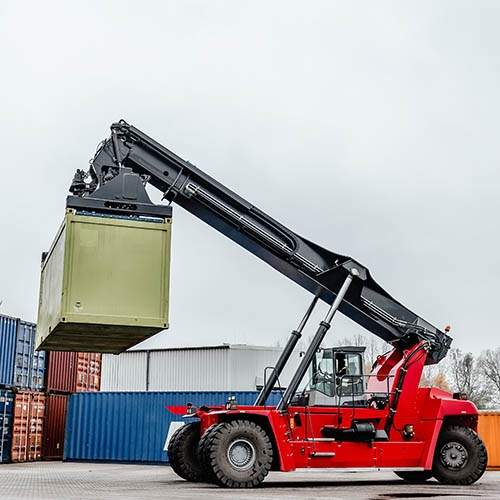The Evolution of Forklift Technology: Embracing the Reach Stacker

Over the years, forklift technology has seen significant advancements and innovations, with one of the most notable being the introduction of the reach stacker. This revolutionary piece of equipment has transformed the way materials are handled and moved within warehouses, distribution centers, and manufacturing facilities. Let's explore the evolution of forklift technology and how the reach stacker has become an integral part of modern material handling operations.
Traditionally, reach stacker forklifts have been used to lift and move pallets and other heavy loads within a confined space. These machines typically have a two-pronged fork that can be raised and lowered to lift loads off the ground and transport them to different locations. While traditional forklifts are still widely used today, they have certain limitations when it comes to stacking loads at greater heights or reaching into narrow aisles. This is where the reach stacker comes into play.
The reach stacker is a specialized type of forklift that is designed for lifting and stacking loads at greater heights than traditional forklifts. One of the key features of a reach stacker is its extendable mast, which allows the fork to reach forward and retract, hence the name "reach stacker." This feature enables operators to stack and retrieve loads from deep racking systems or high shelves, making it ideal for warehouses with limited floor space.
Another innovative feature of the reach stacker is its ability to articulate or swivel the mast, allowing for greater maneuverability in tight spaces. This flexibility in movement is essential for navigating through narrow aisles and around obstacles, which is often a challenge for traditional forklifts. The reach stacker's ability to handle loads at various angles and positions makes it a versatile and efficient tool for material handling tasks.
Furthermore, reach stackers are equipped with advanced technology such as sensors, cameras, and automated controls to enhance safety and productivity. These features help operators to navigate the warehouse environment more effectively, avoid collisions, and optimize load handling operations. With the integration of telematics and connectivity, reach stackers can also be remotely monitored and managed, providing real-time data on machine performance, maintenance needs, and operational efficiency.
As the demand for faster and more efficient material handling solutions grows, the reach stacker has become a vital tool for optimizing warehouse operations. Its ability to handle heavy loads at greater heights, maneuver in tight spaces, and enhance safety and productivity make it a valuable asset for businesses looking to streamline their logistics processes. In addition, the ergonomic design of reach stackers reduces operator fatigue and improves overall comfort during long shifts, promoting a safer and more efficient work environment.
Looking ahead, the evolution of forklift technology is likely to continue, with further advancements in automation, electrification, and connectivity. Manufacturers are exploring ways to make reach stackers more energy-efficient and environmentally friendly, with the development of electric and hybrid models gaining traction. Integration with warehouse management systems and digital platforms is also expected to increase, enabling seamless communication between machines, operators, and inventory systems.
In conclusion, the evolution of forklift technology has been greatly influenced by the introduction of the reach stacker. This innovative piece of equipment has transformed the way materials are handled and moved within warehouses, offering greater flexibility, efficiency, and safety. As businesses strive to stay competitive in a rapidly changing marketplace, embracing the reach stacker as part of their material handling operations can help them achieve greater productivity and operational excellence.